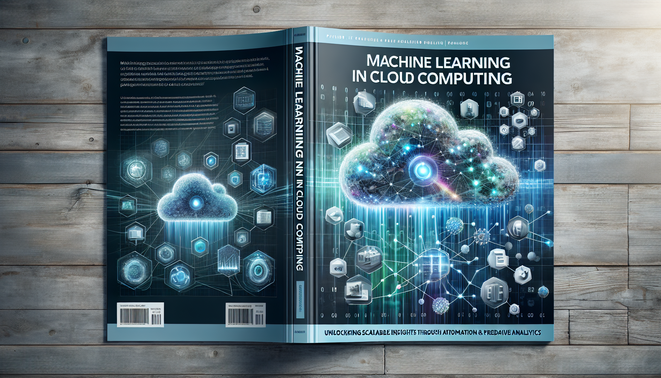Physical Address
304 North Cardinal St.
Dorchester Center, MA 02124
Physical Address
304 North Cardinal St.
Dorchester Center, MA 02124

Machine Learning in Cloud Computing: An In-Depth Exploration
Meta Summary: Discover the synergy between machine learning and cloud computing, a powerful combination reshaping industries through scalable insights, automation, and predictive analytics.
Introduction to Machine Learning
Machine learning, a transformative arm of artificial intelligence, forms the backbone of numerous technological breakthroughs. Its fusion with cloud computing has unlocked scalable resources, revolutionizing data analysis and processing. This in-depth article targets technical professionals, sales teams, and senior management eager to harness these technologies.
Understanding Machine Learning and Its Importance
Machine learning entails developing algorithms that empower computers to learn from data and predict outcomes. It automates analytical model building, vital in finance, healthcare, and e-commerce. Machine learning is categorized into three main types:
Supervised Learning:
Description: Trains models on labeled data where inputs correspond to known outputs.
Applications: Spam detection, image classification, and predictive analytics.
Unsupervised Learning:
Description: Models find patterns in data without labeled responses.
Applications: Clustering, anomaly detection, and market basket analysis.
Reinforcement Learning:
Description: Algorithms learn through rewards for correct actions and penalties for mistakes.
Applications: Robotics, gaming, and resource management.
Exercise: Explore a cloud-based machine learning platform and create a simple model using sample data.
Core Principles of Machine Learning
The essence of machine learning lies in algorithms, training, and models. Algorithms guide data learning, while training adjusts them for improvement. Models are the outcomes that make decisions.
Supervised vs. Unsupervised vs. Reinforcement Learning:
Supervised: Direct data approach with known answers.
Unsupervised: Exploratory data analysis.
Reinforcement: Interaction-based learning with environments.
Exercise: Create a flowchart illustrating the machine learning process from data input to output.
Machine Learning in Cloud Computing: Enhancing Scalability
Cloud computing enhances machine learning by providing on-demand, scalable resources. It enables organizations to handle extensive datasets and deploy models without massive infrastructure investments.
Advantages of Cloud-based Machine Learning
Scalability: Adapt resources according to demand.
Cost Efficiency: Pay-as-you-go, minimizing hardware investments.
Accessibility: Global data and application access.
Integration: Seamless data source and service integration.
Best Practices
Ensure data quality before training models.
Regularly refresh models with new data.
Pitfalls
Neglecting data preprocessing can degrade model performance.
Overfitting limits model generality in real-world scenarios.
Predictive Analytics with Machine Learning
Predictive analytics leverages machine learning for future event forecasting, significant in industries like finance and retail.
Applications of Predictive Analytics
Machine learning unveils patterns invisible to human analysis, making it ideal for predictive forecasting. For instance, retail uses it to anticipate customer behavior and manage inventory efficiently.
Case Study
A retailer employed machine learning to analyze purchasing data, predicting customer demands and optimizing stock levels, reducing both overstock and understock situations.
Automation and Machine Learning: Streamlining Processes
Machine learning strengthens automation, enabling complex task execution without human intervention.
Automated Systems with Machine Learning
Machine learning powers tasks like fraud detection, chatbot operations, and patient record analysis, reducing errors and freeing up human resources for critical tasks.
Case Study
A healthcare provider automated patient record analysis with machine learning, improving diagnosis speed and accuracy and allowing medical staff to focus on patient care.
Implementation Considerations for Machine Learning in the Cloud
Implementing machine learning in the cloud requires careful consideration of architectural components like data storage and processing capabilities.
Key Architectural Considerations
Data Storage: Choose storage solutions based on data types and access needs.
Processing Power: Ensure adequate processing for training and inference.
DevOps Integration: Employ CI/CD processes for timely model updates and deployments.
Best Practices
Refresh models with new, relevant data.
Pitfalls
Overlooking model evaluation and tuning can lead to stagnation.
Conclusion: The Future of Machine Learning and Cloud Computing
Machine learning integrated with cloud computing promises innovation and efficiency, empowering businesses with data-driven insights and process automation.
Encourage further exploration of machine learning tools and resources.
Visual Aid Suggestions
Cloud Architecture Diagram: Show data flow, processing, and storage components for machine learning applications.
Tool Screenshots: Briefly explain features of platforms like Google AI Platform and AWS SageMaker.
Key Takeaways
Machine learning drives automation and forecasting in technology.
Cloud computing offers flexible, cost-effective deployment for machine learning.
Understanding machine learning types is essential for appropriate application.
Effective deployment requires attention to data, model maintenance, and DevOps integration.
Glossary
Machine Learning: Algorithms enabling learning and prediction based on data.
Predictive Analytics: Uses data to predict potential future events.
Automation: Technology performing tasks independently.
Cloud Computing: Internet-based computing services delivery.
DevOps: Combines development and operations for lifecycle efficiency.
Knowledge Check
What is the difference between supervised and unsupervised learning? (MCQ)
Explain how cloud computing impacts the deployment of machine learning models. (Short Answer)
Further Reading
Machine Learning in the Cloud: What You Need to Know
ML Best Practices
AWS: What is Machine Learning?
You have brought up a very great points, regards for the post.